From November 7th to November 9th, Bremen’s Senatorin für Umwelt, Klima und Wissenschaft (SUKW) and Bremer Umwelt-Beratung (BUB) hosted our Biodiverse Cities team for the third partner meeting.
Authors: Marius Wittmann, Sofia Aivalioti, Sol Gustafsson and Caitlin Ball
The Biodiverse Cities team reunited to exchange ideas and progress towards our goal of addressing the biodiversity and climate crisis by helping the transition towards nature-inclusive societies. At this project stage, we are working with pilot cities to plan and design the pilot activities that will bring nature to cities and people to nature. This meeting took a special focus on our host city: Bremen.
Three days in biodiverse Bremen
On the first day of the meeting, our team was introduced to the local stakeholders. It was a moment to build connections and lay the foundation for collaborations needed to reach our biodiversity goals - transnationally as well as locally. Our city partners delivered pitches on the pilot and pollinator sites, giving a firsthand look at how the project is progressing across eight different cities. These updates not only provided valuable insights but also served as a source of inspiration, sparking new ideas and perspectives.
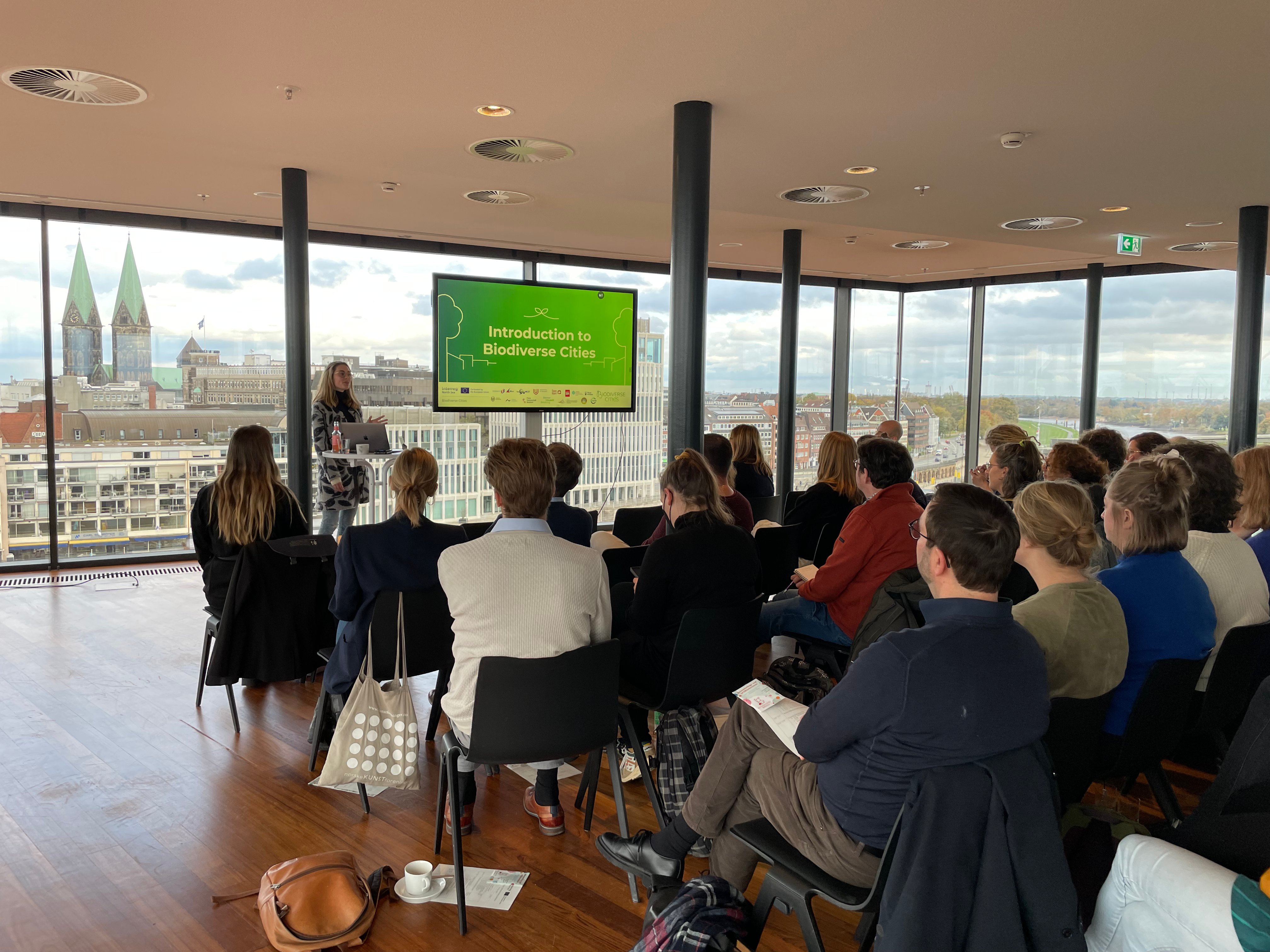
Dana Huibers of Lead Partner Dordrecht presenting Biodiverse Cities
We began the second-day activities with a walk through Bremen’s pilot sites of Lindenhof in Gröpelingen and the neighbouring Industrial Park Riedemann-Reiher-Straße. Here, we did a mini BioBlitz, capturing photographs of local species and uploading them to the iNaturalist app to document the area's biodiversity. This immersive experience allowed participants to explore Bremen’s chosen locations and collectively brainstorm their residential and environmental potential. As an extra bonus, we gathered some great material for our Photography Contest tradition.
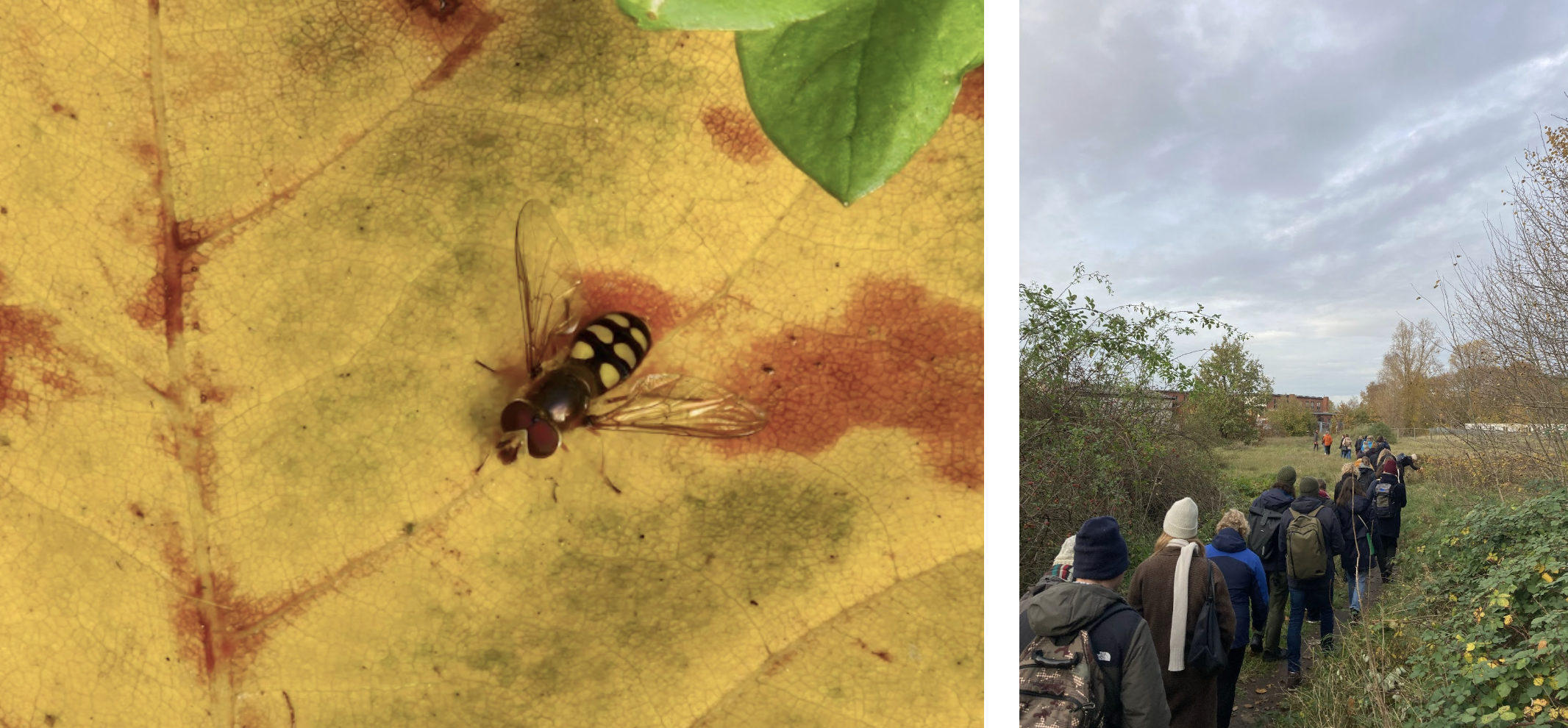
Images from the mini BioBlitz
Following the outdoor excursion, we dove into an indoor discussion on the co-creation process. With insights from the pilots' walk, partners formed teams to identify the qualities and challenges inherent in the sites. It became clear that everyone views the areas through a different lens, underscoring the indispensable importance of including diverse perspectives. The co-creative process emerged as a common ground for neighbourhood development, emphasising the significance of involving residents in the planning process.
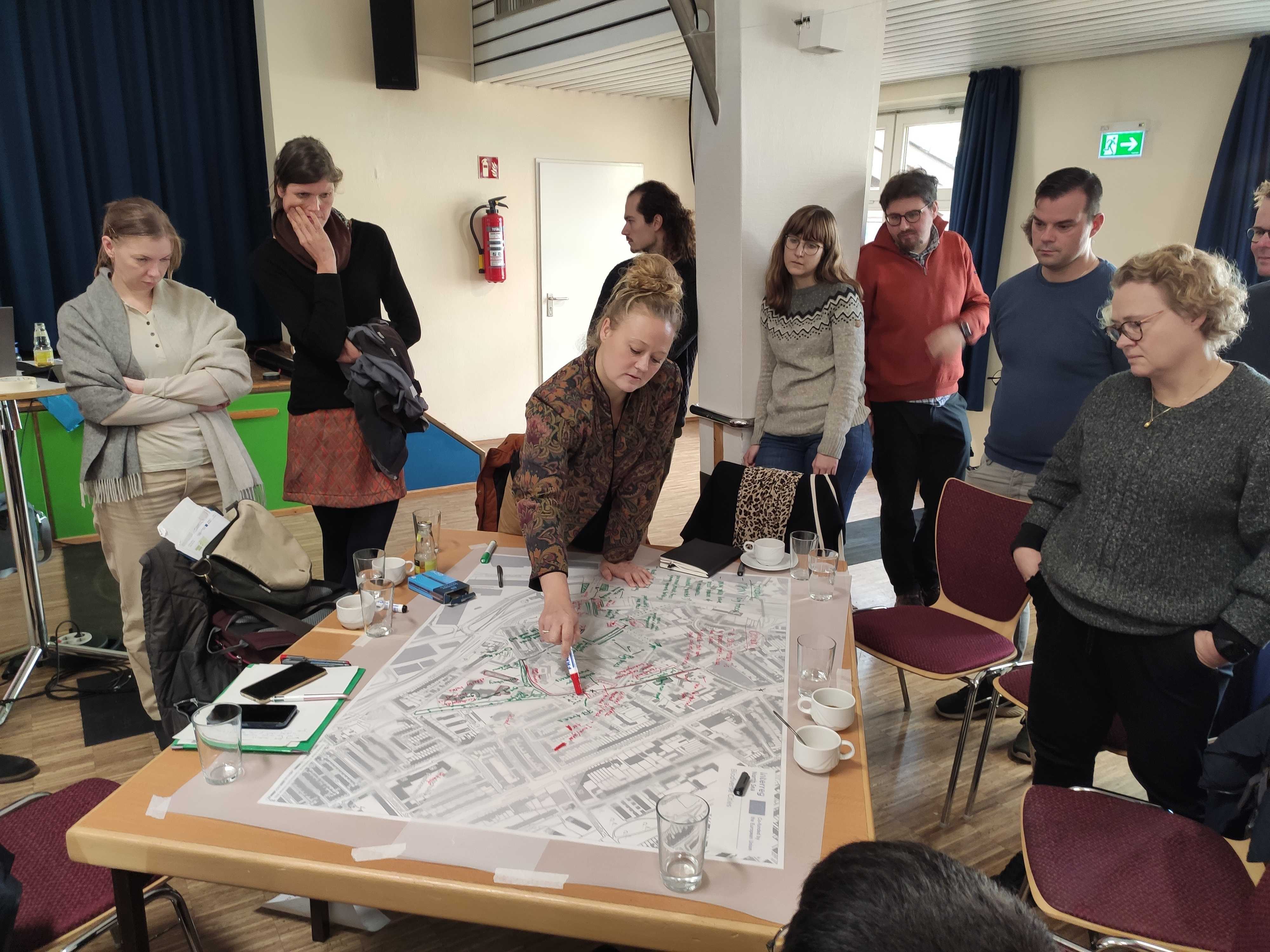
Exploring the power of dialogue maps
On the third and final day, Aeres University of Applied Sciences presented the Transnational Peer Learning Programme on Governance. During the session, pilot and pollinator cities identified the barriers of Nature-Based Solutions (NbS) for their sites. The partners compared the barriers of NbS, and assessed whether there are situations that pollinator cities will face the same barriers that pilot cities face, and if so, determine how we can learn from these.

Sharing lessons at the International Peer Learning Session
The Biodiverse Cities partner meeting in Bremen was an opportunity to collaborate and advance our mission of bringing people and nature together, building nature-inclusive communities. In particular, it was a moment to get insights in the planned work of Bremen and their goals to redevelop the Lindenhof Area as well as their initiative for unsealing and greening the Industrial Park Riedemann-Reiher-Straße.
A closer look at Bremen’s pilots
Pilot 1 - Lindenhof
Lindenhof, a densely populated neighbourhood in Gröpelingen, faces social challenges and environmental issues such as pollution and urban heat. The interventions include creating a green corridor by reshaping Bürgermeister-Ehlers-Platz and other dysfunctional urban fabric, greening initiatives for private households, collective biodiversity activities with school kids and local neighbourhood actors, spatial interventions with mobile green elements, and a biodiversity baseline study. The objectives include improving urban green infrastructure, motivating private actors to green their properties, and raising awareness for climate-related topics.
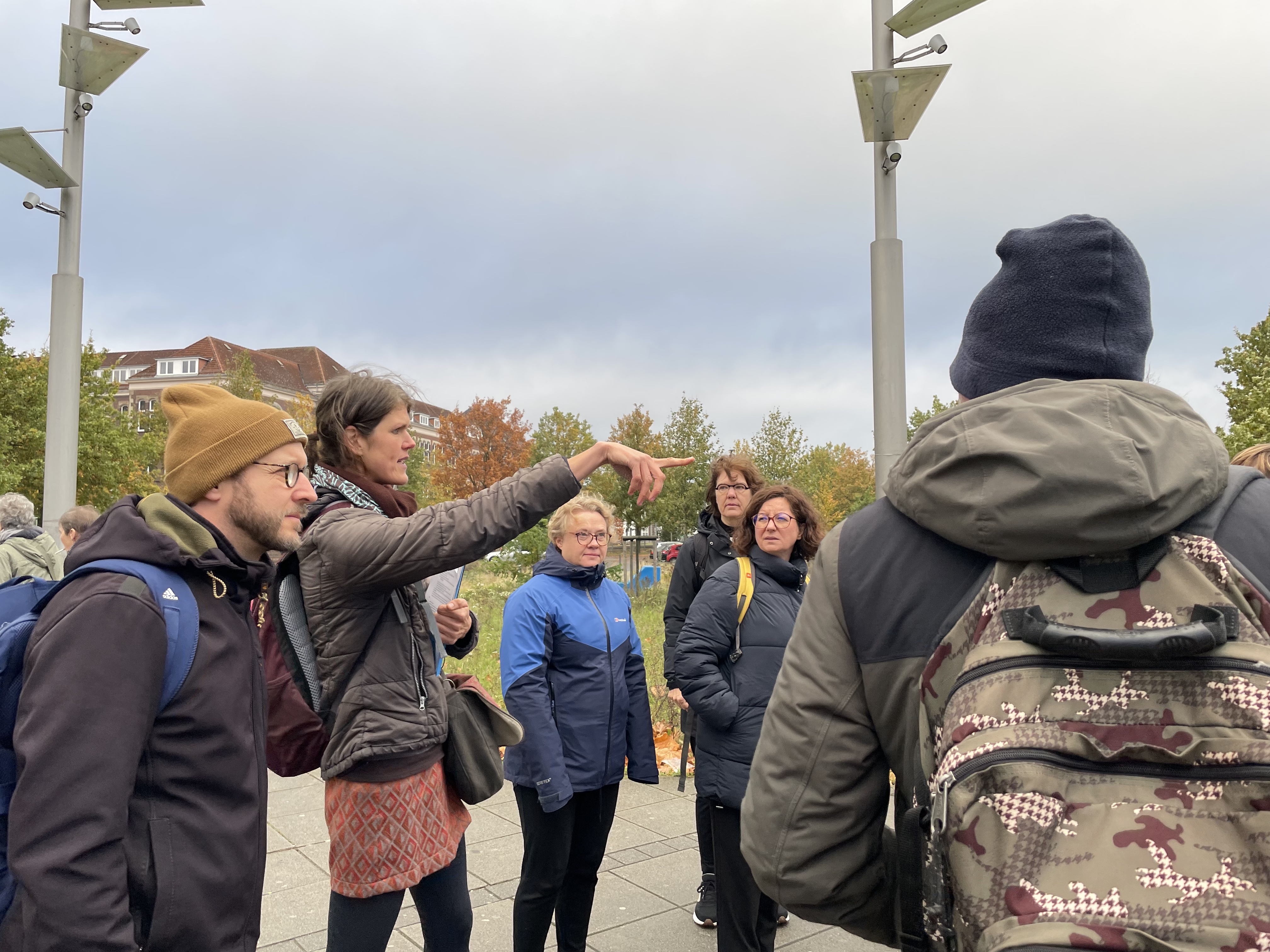
Exploring Lindenhof with the Biodiverse Cities team
Pilot 2 - Industrial Park Riedemann-Reiher-Straße (RR)
The Industrial Park RR, dominated by a car-friendly design, lacks urban green spaces. Proposed interventions include unsealing and greening private commercial properties, creating a green hideaway in public parking spaces, collective biodiversity activities with the local stakeholder “Bremen Invest”, and conducting a biodiversity baseline study. The objectives involve creating biodiversity-friendly economic infrastructure, raising awareness of climate-related topics' impact on local economic development, and activating business owners to take responsibility for public green infrastructure.
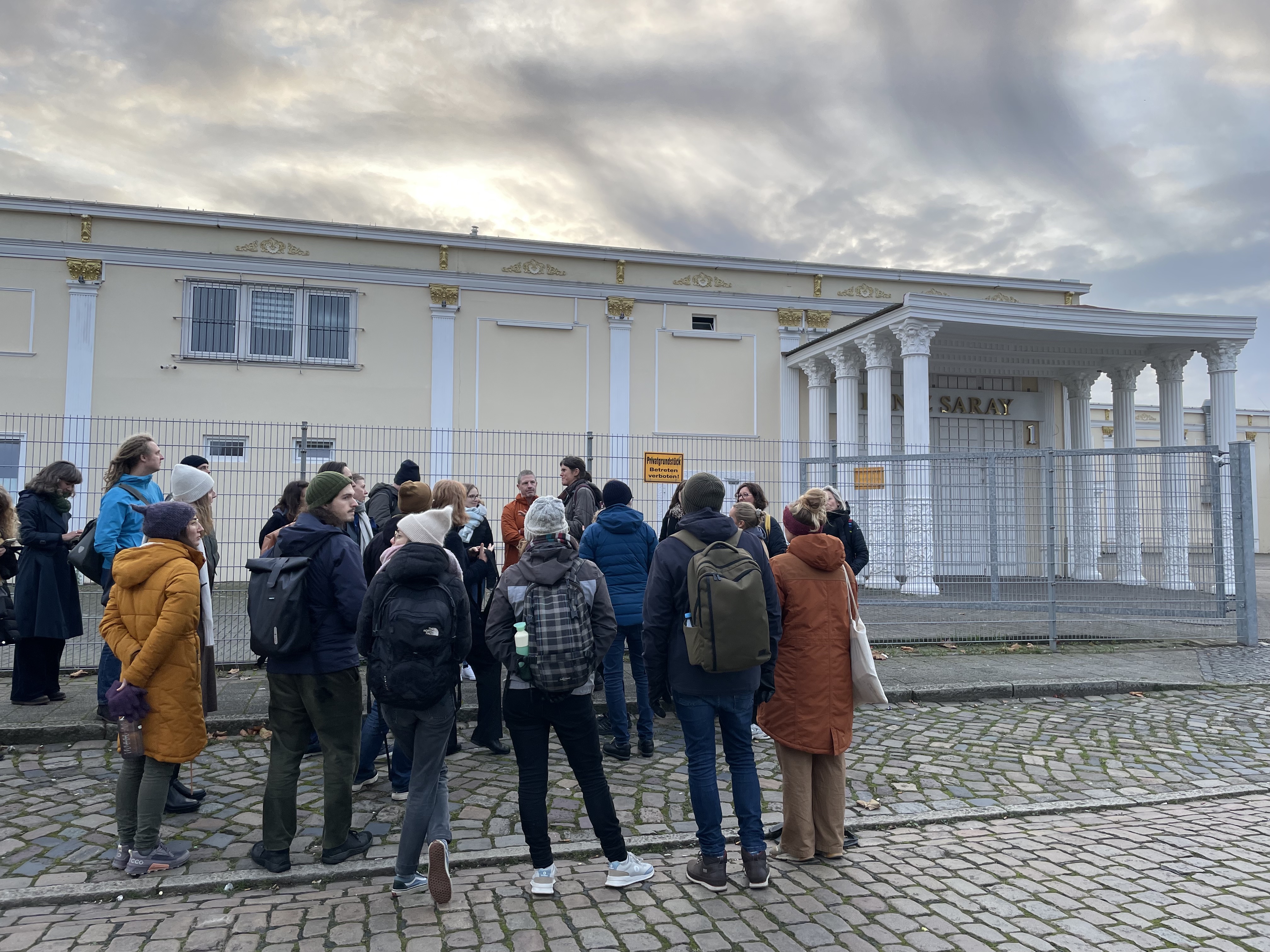
Surveying Industrial Park Riedemann-Reiher-Straße (RR)
Building towards the future
As the project continues to gain momentum, it is planting the seeds of change through collaboration, innovation, and shared dedication to building nature-inclusive societies. Next stop - Lille! In April the Biodiverse Cities team will meet to support our hosts with their biodiversity challenges. For more information on the project pilots, check out our pilots page!
